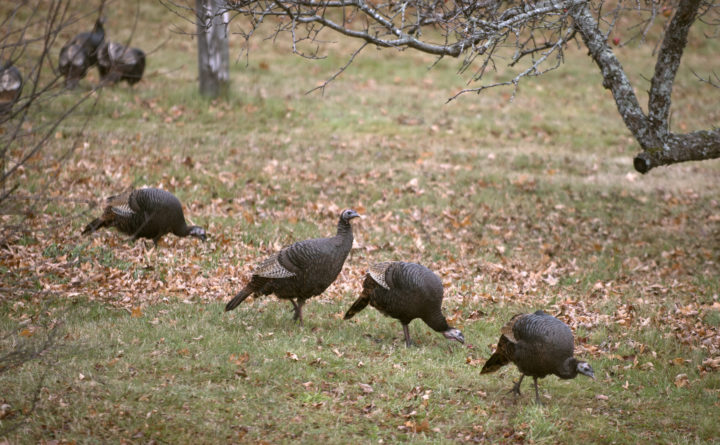This is the fourth of four stories outlining the Department of Inland Fisheries and Wildlife’s recently unveiled big game management plan, which includes deer, bear, moose and turkeys.
Maine’s wild turkey restoration program is, without question, a model of successful wildlife management. Consider: In 1977, 41 wild turkeys from Vermont were transported here, beginning an effort that has led to turkeys living in all 16 Maine counties, a statewide population of between 50,000 and 60,000, and a resource appreciated by many hunters.
But for some — especially farmers in southern counties — the word “turkey” has become a dirty word, as the birds are blamed for eating silage and crops. As state wildlife biologists embark on a new 10-year management plan for the species, they’ll be trying to strike a balance between those who’d like even more turkeys on the landscape and those who’d prefer none at all.
“We did our public survey in terms of acceptance of species, and knowledge of a species, and turkeys were flagged,” said Kelsey Sullivan, the Maine Department of Inland Fisheries and Wildlife’s game bird biologist. “About 30 percent of the people in Maine — more in southern Maine — wanted to see less of them rather than grow the population.”
It took only nine years from that initial introduction until a first limited turkey season was staged, and in the years since, even more turkey-hunting opportunities have been opened as the population has grown. Sullivan said that in some specific areas, it’s likely time to allow even more liberal harvest of the birds. Today, in the Wildlife Management Districts with the most turkeys, a hunter is allowed to kill two birds in the spring and another two in the fall.
The County is pleased to feature content from our sister company, Bangor Daily News. To read the rest of “Maine hunters could get to take more turkeys under proposed state plan,” an article by contributing Bangor Daily News staff writer John Holyoke, please follow this link to the BDN online.








